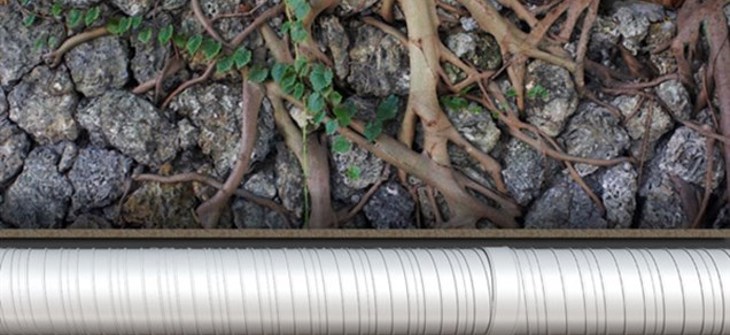
RELINE Considerations for Root Intrusion, Compromising Joints, Void Detection
After recently completing a PDH article for Informed Infrastructure entitled, ""How to Design a Culvert Reline Project." I thought it apropos that we take some time here to answer a few more questions regarding reline that I have received over the course of time. So without further ado and in no particular order, let's delve into the World of Reline.
- WHAT SHOULD WE DO TO PREVENT ROOT INTRUSION IN THE NEW RELINE PIPE?
The most common approach to control root intrusion with segmental sliplining is to use gasketed joints that meet the requirements of ASTM D3212. If a segmental product doesn’t offer that type of joint, then the grout must be the root blocker, therefore making the selection of grout mix and type becomes more important. A joint in the new system that is tight against fluid grout, and the grout itself will arrest the intrusion of roots after lining. SPR™ PE spiral wound pipe is an option that doesn’t have any joints at all, and it is viable for closed systems where an insertion pit is too costly.
- WHAT ABOUT SITUATIONS WHERE THE PIPE MATERIAL IS STILL STRUCTURALLY SOUND, BUT THE JOINTS MAY BE COMPROMISED FOR INFILTRATION. DO YOU SUGGEST FULL LINING OF THE STRUCTURE OR JUST JOINT REPAIRS?
Unfortunately, it’s not a black and white answer but generally if joints are the only issue, and filling the voids and soft spots outside the joint is possible then a joint repair can be done. Joint repair options include grout injections, cured in place plastic internal sleaves and laid up fiberglass approaches. I’m not very knowledgeable in this area but I’ve seen a few Avanti presentations and they may have some good ideas for this type of situation. http://www.avantigrout.com/. As with any pipe rehab situation, assessment, clearly defined design objectives and safety are critical.
- I WAS RECENTLY INVOLVED IN RELINING OF A CLAY PIPE UNDER A STATE HIGHWAY. THE EXISTING HOST PIPE FAILED DURING THE CIPP LINING PROCESS DUE TO WASHOUT OF BEDDING AROUND THE PIPE THAT WAS NOT IDENTIFIABLE DURING A CCTV OF THE PIPE. THE LINER WAS REMOVED BUT AN EMERGENCY EXCAVATION WAS REQUIRED TO REPLACE THE PIPE. IS THERE ANY WAY THAT THIS VOID COULD HAVE BEEN IDENTIFIED TO SELECT A DIFFERENT METHOD OF REHABILITATION?
There are ground penetrating radar systems that are available. Since the host pipe was clay, the radar would penetrate. It doesn’t work penetrating through ferrous materials, according to what I’ve read. A terrific source of information on various reline technologies and technical resources is the North American Society for Trenchless Technology (http://www.nastt.org). As a member one can search their vast technical resources.
Although inapplicable to most vitrified clay pipes, if the pipe were big enough for man entry then sounding the pipe near all joints can reveal large voids. Exploratory holes can be drilled at those areas to determine the extent of the void and to help determine the best solution.
In conclusion, as I've said before, there is no one clear answer when it comes to reline. The key is to do a thorough assessment prior to beginning any type of work, so you have an understanding of the current structure's condition and understand exactly what problems you are facing. Keep the questions coming! It's always better to ask first rather than be sorry later.
